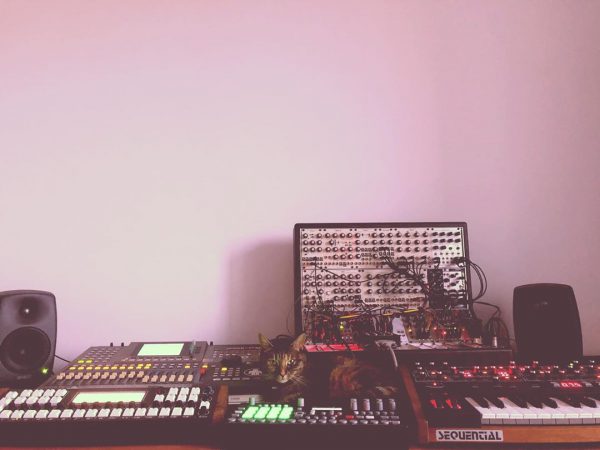
A cat sits in the middle of a rather impressive setup including two Elektron instruments, a Sequential Prophet 6, and a large modular system. From markuswansart via Instagram.


A cat sits in the middle of a rather impressive setup including two Elektron instruments, a Sequential Prophet 6, and a large modular system. From markuswansart via Instagram.
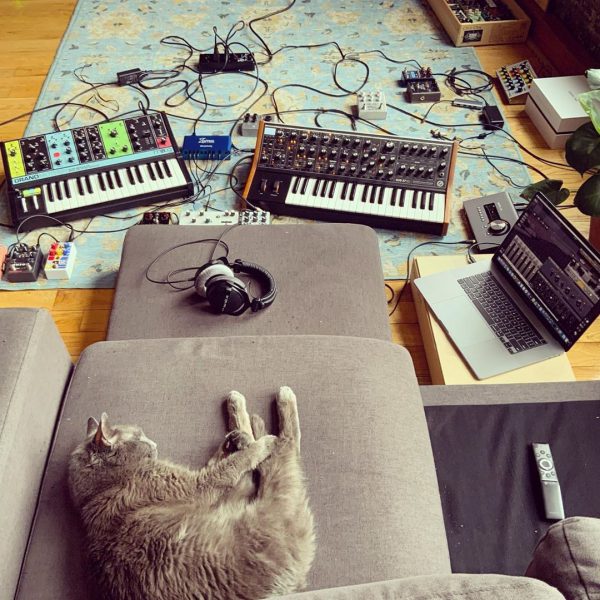
Our friends at Universal Audio are getting into the CatSynth-pic business with this post on Instagram 😺
Who’s making music in their living room these days 🙋♂️⠀
https://www.instagram.com/p/CAWVWL0jT-0/
We see Moog Granthmother and Sub 37 synthesizers, a few pedals, and of course a UA Apollo interface.
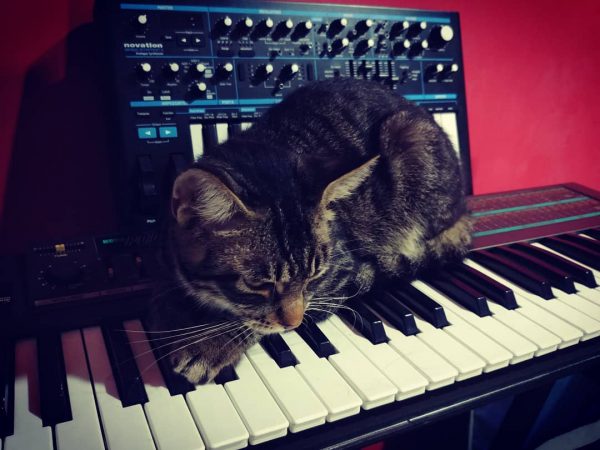
Loki finds the purrfect spot on a Korg Poly 800 in front of a Novation Bass Station. From the thedigitalpurrgatory on Instagram.
Loki the Cat distracting me, once again, just after setting the synths for a jam.
You can see Loki’s previous appearances on CatSynth here.
The Novation Bass Station is quite a popular instrument at the moment, an analog mono bass synth in the spirit of Moog past and present, and in someways similar to the Arturia MiniBrute 2 that we use here at CatSynth studios. The Poly 800 is a small vintage synthesizer, a transition from Korg’s earlier “Mono/Poly” classic into their instruments of the 1980s. I was actually interested in the later Poly 800ii though never acquired one.
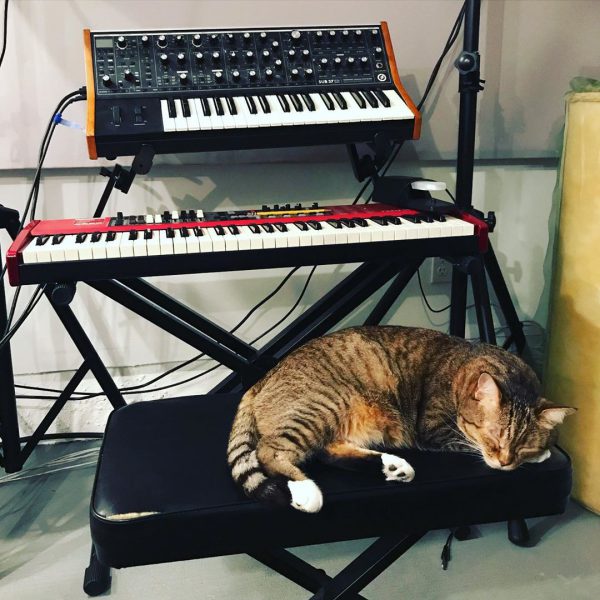
A pic from the studio of our friend and collaborator Bill Wolter. His cat naps in front of a Nord Electro and Moog Sub 37.
Studio buddy. She’s my friend until I start playing drums.
Our cats are used to all sorts of crazy loud sounds emanating from the studio, but I suppose live drums is something altogether different from a psychoacoustic perspective.
You can see the many other posts on CatSynth featuring Bill here.

Little Aria rests atop an Oberheim Matrix 12. We also see another Oberheim synth in the background.
The Matrix 12 was one of the great Oberheim analog synths of the mid 1980s, building on the sounds of the OB-X and OB-Xa but with greater programmability and MIDI. In particular, it including “matrix modulation” that can be found in a great many synthesizers today.
The Matrix 12 is similar to the Xpander and the lighter Matrix 6. But [it] is much fatter and more programmable than either. Every control can have an effect on some other parameter thanks to Oberheim’s flexible design. For example, there are 15 types of LFOs and VCAs per voice! And there’s plenty of diagrams drawn out on the front panel of the synth to help you figure out some signal routing.
http://www.vintagesynth.com/oberheim/mat12.php
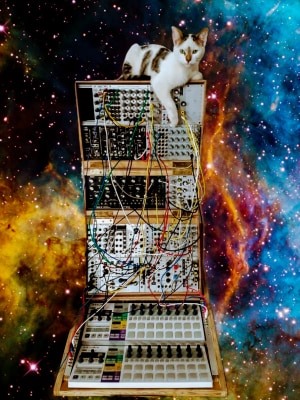
Frank proudly shows off a massive modular system anchored by a pair of Arturia BeatStep Pros. And in space to boot!
Submitted by Wellington Bär via our Facebook page.
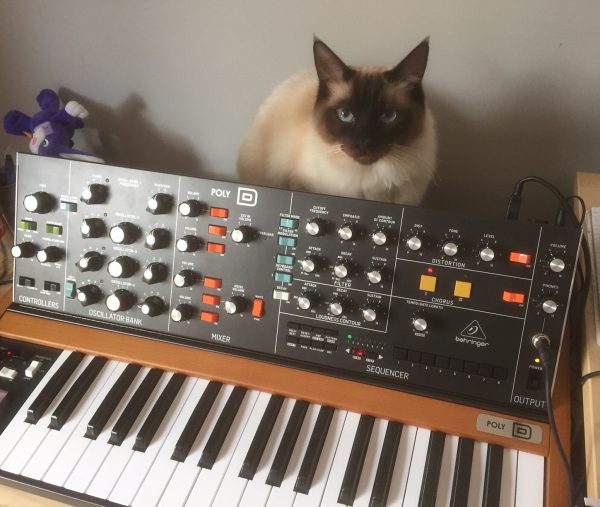
Monty definitely likes the new Behringer Poly D. Submitted by Julian Guffogg via our Facebook page.
The Behringer Poly D is a four-voice version of their Model D synthesizer that recreates the sound of an original Minimoog Model D. They can be used for 4-voice polyphony or stacked atop one another for an eight-oscillator voice. It also has a keyboard reminiscent of the original, and a sequencer and arpeggiator.
You can see a previous post featuring Monty here.

Milly the black cat stands proudly behind an Arturia MatrixBrute. From Stuart Russell via Twitter.
Milly (behind the beast)
https://twitter.com/stuartr_comp/status/1268214963216228353
And what a beast it is 😸
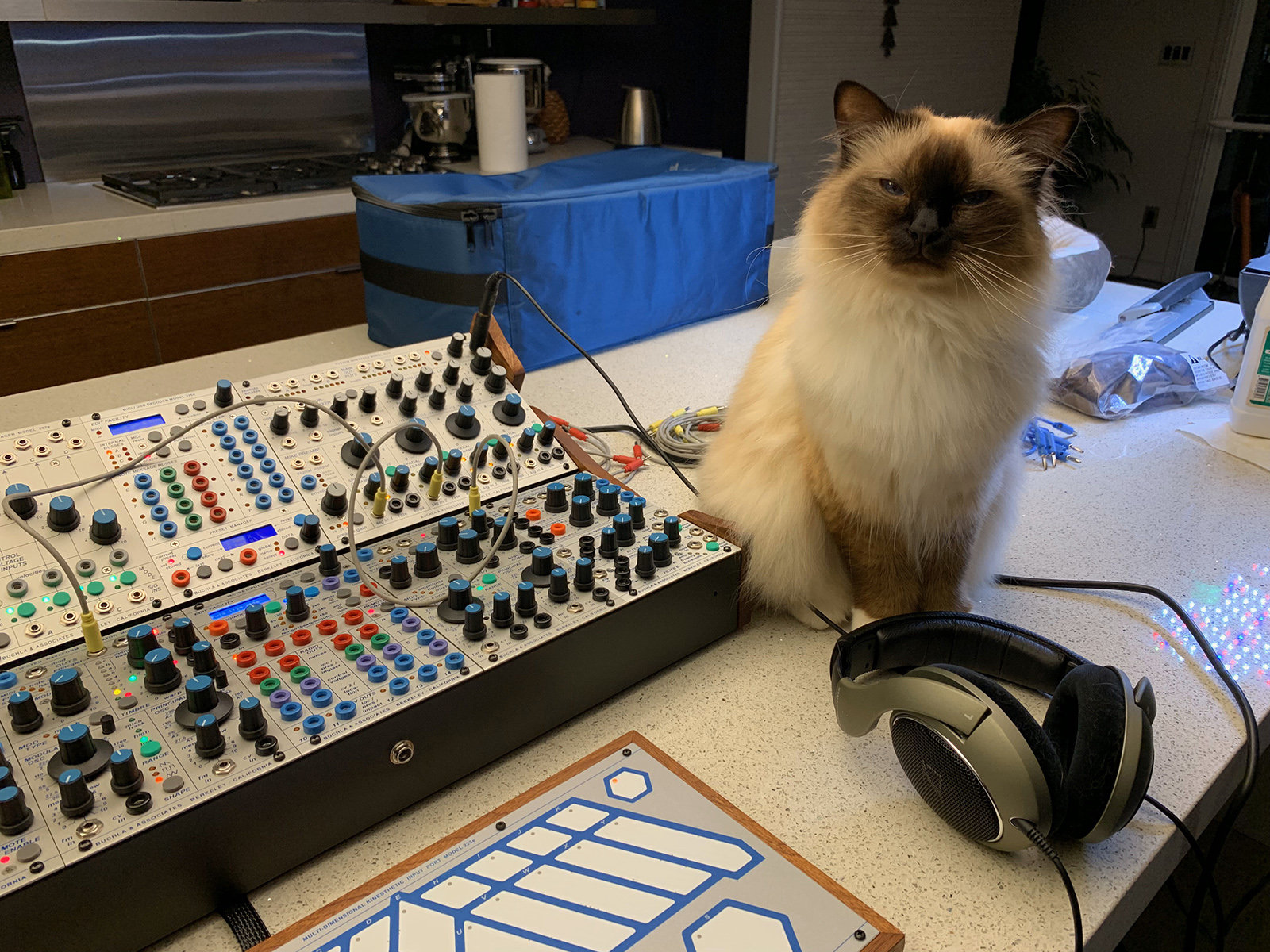
Today we have a rather handsome cat next to a rather handsome Buchla Skylab system. It includes the “Thunder”-style controller and a 227e module as a customization. Overall a very impressive modular synth.
From user @ddp on Twitter. And it was quite an interesting turn of events to discover one another. It was through our cat-blogging friend Sue Strong who longtime readers might remember from the old Carnival of the Cats and Weekend Cat Blogging days. Good times!